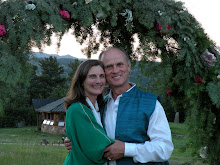Notes on a visit to
the Mondragon worker-owner cooperative system, by David & Lila Tresemer,
September 2012 (www.MountainSeas.com.au and www.DavidAndLilaTresemer.com), PART
I
These notes are intended as helpful for those considering
alternate forms of shaping social initiatives in the world – how people work
together to make something.
First off, credit is due to Georgia Kelly, leader of the
Praxis Peace Institute in Sonoma, for putting together several groups of people
to tour the facilities in Mondragon, Spain. We were on her fifth tour with 16
other people. She has done more than anyone to introduce the Mondragon
principles and techniques to the West.
The question is: How can people come together to create a
viable business that cares for the quadruple bottom line of a venture. These items
are NOT in order of preference as they are all important.
1.
1. The success of the venture that awards those who
set up the venture (the inventors/designers/entrepreneurs, who become the
owners and stockholders) – OWNERS
2.
2. The care of the lives of the people who work
there to make the products or services that go into the world (the workers) –
WORKERS
3.
3. The care of the customer so that they receive
something of high quality and safety – CUSTOMERS
4.
4. The care for the environment from which
materials are taken to make the products and services, and to which materials
are returned when the product has been used up (and also when there is waste in
the process of manufacturing) – ENIVRONMENT
In our naiveté, Lila and I had assumed that forward thinking
people would include all of those considerations, including others:
·
* good health through regular exercise such as
yoga or morning eurythmy or Tai Chi
·
* an emphasis on participatory sports rather than on
spectator sports
· *
health through attention to nutrition including
an emphasis on organic food free of pesticides and GMOs
· *
a sense of the spiritual connections to the
abundant earth and heavens that supports all of our activities
·
* gratitude for life expressed through ceremonies
of the seasons
·
* and so on.
·
* One more: an ideal pictured by Rudolf Steiner
about central Europe in the 19th century – workers who at night
practice the violin and join together in little ensembles for the sheer joy of music.
None of these are part of the Mondragon system or the
culture of the area. These enlightened positions are as rare as elsewhere, with
a bit more in the health area that we discuss further below. Indeed, the
quadruple bottom line is not operative in ways that one can find elsewhere. The
place where Mondragon puts its entire attention is on #2, and on smoothing the
age-old tension between #1 and #2. Yes, they pay attention to #3, as any
company desiring longevity would do, and to #4, as many companies do, but it’s
not at the top of their list. They succeed in not valuing only #1 which is
tearing the USA apart. They succeed in supporting actual human beings who do
the work - #2. Well done for that.
In regular capitalist ventures, the emphasis has come to be
more and more on profit, even at the cost of longevity of the initiative. The
managers are made into owners through bonuses of stock options (the privilege
to buy a stock at a specified low price) awarded to them by the Board of
Directors (made up of high-level managers of other companies). Their efforts
are to raise the price of the stock through whatever means available, often at
the expense of #2, #3, and #4. Then they “exercise the option,” buying low and
instantly selling high. At the largest corporations, the Chief Executive
Officers earn in income many hundreds of times more than the lowest-paid
line-workers. The salaries and the bonuses of cash and stock options have been
gutting companies. The workers have been laid off and, as the experts say,
“these jobs are not coming back.”
Consider a very different model. The 120 Mondragon cooperatives
in several different business areas employ approximately 100,000 people. Each
cooperative is run by a committee made of the workers. As they all stand to
gain or lose by the decisions of the committee, the workers – whether
management or line-workers – vote in the best interest of all. One person one
vote. Managers make no more than 6 times what the line-worker makes.
And here is the unusual aspect of their model. Their highest
goal in the above list of the quadruple bottom line is #2. Their job is to
maintain employment for all of their members. Even if the company votes to take
a pay cut across the board – workers and managers alike.
More story, and increasing details, in Part II.

No comments:
Post a Comment